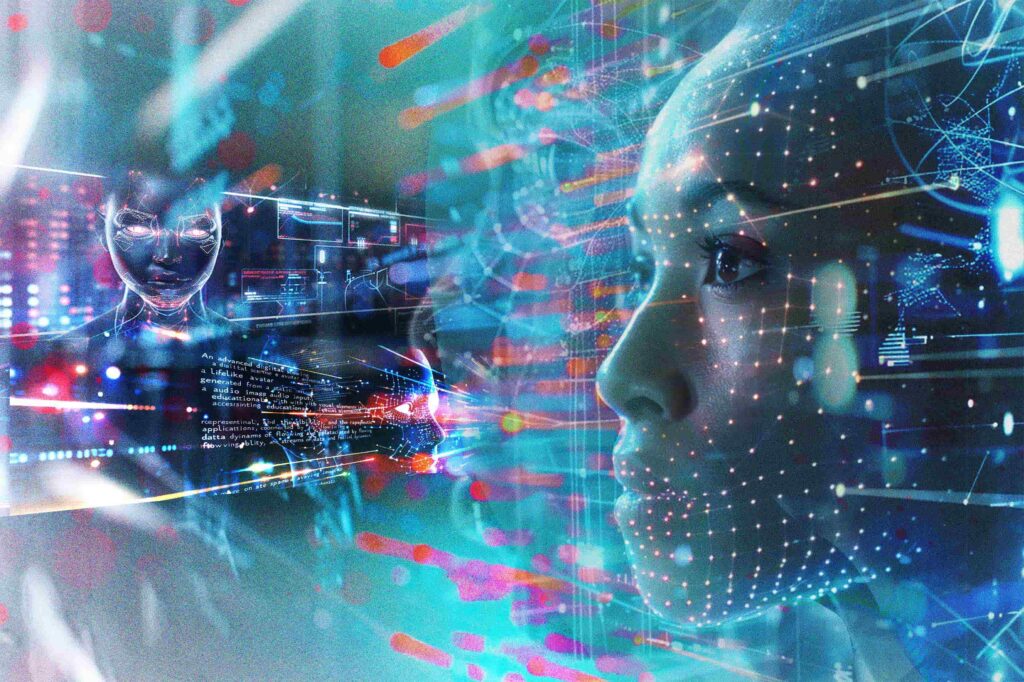In the digital age where multimedia and communication technologies continue to impress the masses with their dramatic advancement, Microsoft Research Asia introduces VASA-1, a transformative model designed to generate real-time, lifelike talking faces from a single static image and a speech audio clip. This technology pushes the boundaries of audio-visual synchronization and enhances the realism and effectiveness of human-computer interactions across various domains.
Comprehensive Overview of VASA-1 Technology
VASA-1 stands out for its ability to produce synchronized lip movements, natural facial expressions, and head movements.
Core Innovations:
- Holistic Facial Dynamics Modeling: Unlike traditional methods that treat different facial features separately, VASA-1 models all aspects of facial dynamics—including lip movements, eye gaze, and other expressions—as a single latent variable. This approach ensures seamless integration and fluid motion, contributing to the model’s lifelike outputs.
- Diffusion Transformer Model: At the heart of VASA-1’s capability is a Diffusion Transformer model that enhances the generative process. This model is trained on a vast dataset of face videos, allowing it to accurately replicate human-like nuances in facial dynamics and head movements based on audio inputs alone.
Expanding the Horizons of Digital Communication
VASA-1’s application potential is vast and varied:
- Enhanced Accessibility: VASA-1 can facilitate more expressive interactions for individuals with communicative impairments, providing a platform for clearer and more empathetic communication.
- Education and Learning: In educational settings, VASA-1 can serve as an interactive tool for AI-driven tutoring, capable of delivering instructional content with engaging and responsive facial expressions that mimic human tutors.
- Therapeutic Use: The technology also holds promise in healthcare, particularly in therapeutic settings where lifelike avatars can offer social interaction and emotional support to patients.

Technical Specifications and Performance Metrics
VASA-1 delivers high-resolution videos (512×512 pixels) at up to 40 frames per second, with negligible starting latency, making it ideal for real-time applications. The model’s efficiency and quality are evidenced by its performance across several newly developed metrics for evaluating lifelike digital animations, where it significantly outperforms existing methods.
Future Directions and Ethical Considerations
Looking ahead, the development team aims to refine VASA-1’s capabilities by:
- Broadening Emotional Range: Incorporating a wider array of emotions and talking styles to cover more nuanced interactions.
- Full-Body Dynamics: Expanding the model to include full-body dynamics for complete digital persona creation.
- Multi-Lingual and Non-Speech Sounds: Enhancing the model’s responsiveness to a broader spectrum of audio inputs, including multiple languages and non-verbal sounds.
The ongoing development will focus on safeguarding against misuse, particularly in impersonation or deceptive uses.
Conclusion
VASA-1 by Microsoft Research Asia represents a significant step forward in the convergence of AI and human interaction. By delivering real-time, high-fidelity talking faces, VASA-1 opens new pathways for making digital interactions as rich and engaging as face-to-face conversations. It promises not only to transform user experiences but also to foster connections that transcend the digital divide.
Let us know your thoughts! Sign up for a Mindplex account now, join our Telegram, or follow us on Twitter.


.png)

.png)


.png)
